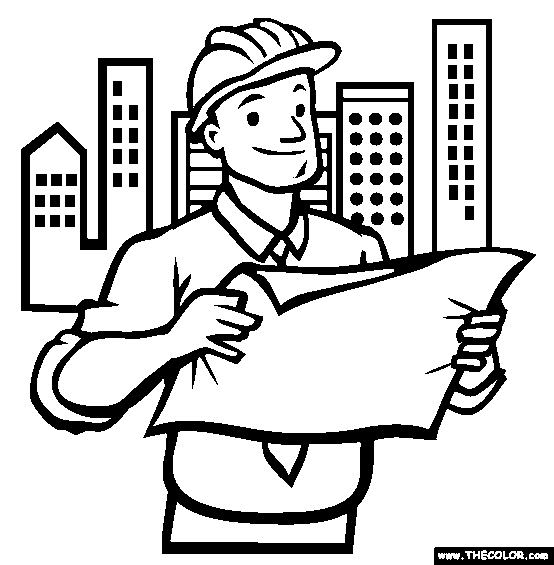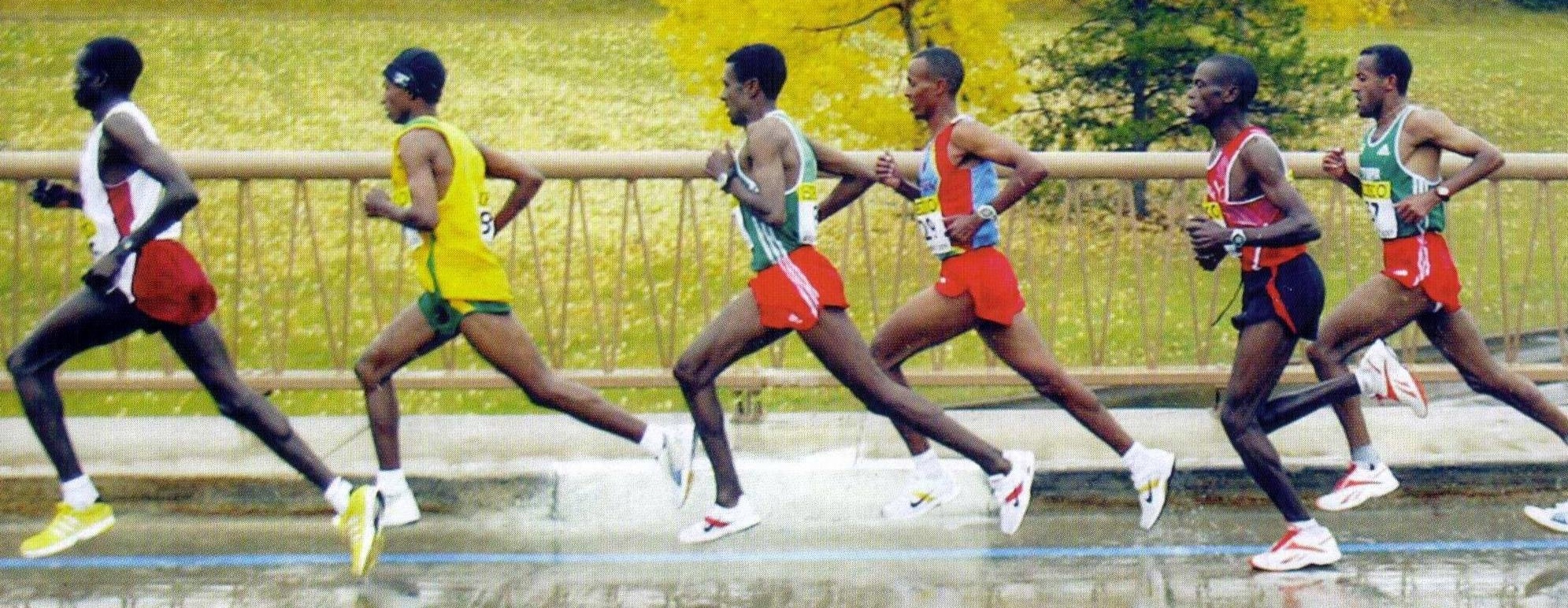Thanks to all for a lively debate on the topic of
mechanics in long distance running.
To summarize the
4 Fundamental Problems listed in the previous post:
#1 - No One Teaches Us How to Run#2 - Fast Kids Become Sprinters, Slow Kids Are Distance Runners
#3 - The Complete Disregard for the Dynamic Nature of Running Strides
#4 - The Over-Emphasis on Physiological Distance Training versus Biomechanics
These distill down to one big issue: we're passing the buck on running mechanics, and missing out on making significant improvements in athletic performance.
Based on that premise, as promised, below are some proposed "solutions":
#1 - Recognition of Stride Mechanics as a Relevant Aspect of PerformanceYou cannot fix a problem if you do not recognize it, or at least consider it within the realm of possibility. Many coaches out there --
elite coaches -- fail to consider or recognize the contribution of individual mechanics in performance.
Clearly, mechanics is not the only factor in performance, nor is it the "end-all" solution to running greatness. However, recognize that mechanics should hold
equal if not higher priority than all other aspects of training -- because the success of all other running-based training relies upon
optimal mechanics.
To reiterate:
- Decreased maximum efficiency --> the body absorbs more energy than it transmits --> more tissue stress --> slower recovery --> lower training volume tolerance, or INJURY -- SLOWER PERFORMANCE
Stride mechanics should, in the very least, be given equal regard to physiology, training theory, sport psych, and nutrition.
 #2 - Belief that Stride Mechanics Can Be Improved Through Coaching
#2 - Belief that Stride Mechanics Can Be Improved Through Coaching
Too many runners and coaches believe that either (A) stride mechanics cannot be changed, or (B) that to do so is a death wish.
Neither is true. I read several comments saying,
"So-And-So has weird mechanics and they're GOOD, so why change?"That's like saying,
"Billy's doing easy mileage and hills for training and he's FAST, so why change?" Yet coaches constantly tinker with training methodology -- mileage, workouts, timing, cross-training -- with the intent that
optimization facilitates improvement.
This should also be the case with stride mechanics.
Negative, "distaster" examples from a change in training program are just as common (if not more so) than a change in mechanics. And both arise due to:
- lack of knowledge by the coach on what the athlete truly needs, and/or
- poor implementation on the part of the coach and/or athlete
The answer to flawed mechanics is not,
"Let's not mess with it, 'cuz it could get worse". The answer is
education.
#3- Recognition that "Doing Drills" Alone Will Not Change MechanicsI've seen countless kids that rule at "A-steps" and "B-skips" with perfectly awful strides. Why? Because the (well-intended) principles of the drills are not c
onsciously and repetitively practiced in stride.To change form, you have to
run differently -- not just do a skip before or after. If the stride does not
feel differently to an athlete,
it isn't changing.
 #4 - Acceptance of Fundamental Norms of Optimal Stride Mechanics
#4 - Acceptance of Fundamental Norms of Optimal Stride Mechanics
The BASIC norms proposed below, like physiological training systems (aerobic, anaerobic alactic, anaerobic) and subsystems, are based on research conducted in biomechanical labs, or on observational study.
The most detailed, coherent and easy-to-implement resource on running biomechanics I have found is called
Explosive Running, written by
Michael Yessis, Phd, a biomechanist/Professor Emeritus at Cal State Fullerton. It is primarily from his text where I choose to obtain these norms.
This is not an all-inclusive list. Listed below address but a FEW of the common mechanical errors observed clinically:
Inadequate hip flexion during flight phaseThe #1 problem I see -- both clinically and as a coach/runner -- is inadequate hip flexion during swing or flight phase of running. They're simply not getting their leg high or far enough forward.
PROBLEMS ASSOCIATED: inadequate hip flexion can result in a myriad of problems. Instead of their body energy going FORWARD, it is going DOWN, resulting in:
- Shorter strides
- "Shuffling gait"
- Slower running speeds
- Heel striking
INJURIES: anterior shin splints, knee pain, ITB syndrome, stress fractures (foot, tib-fib, femur), back/SIJ pain
NORM: 35-45 degrees of hip flexion (as measured from vertical) sustained through swing phase*
(*depending on pace; the faster pace, the more flexion)
Inadequate knee extension during flight phase/early stance phaseThe second most common is inadequate leg extension, or "flicking foward" of the tibia on the [FIXED] femur.
PROBLEMS ASSOCIATED: Like insufficient hip flexion, not enough knee extension causes a short stride. But, different from the hip, not enough knee extension results in a bouncy or "squat" stride and overall poor efficiency, as the leg is not acting as a stable lever for power transfer between the runner --> ground --> runner.
- Short striding
- Slower speeds
- Poor frontal plane control of hips/knees (knees going in and out)
- "Bouncy stride"
INJURIES: heel/arch pain, medial shin spints, patellofemoral pain ("runner's knee"), ITB syndrome, back pain
NORM: 5-10 degrees of knee flexion at initial contact ("nearly straight"/"slightly bent")
Poor pelvic position or instability
Translation: the pelvis has to be in the neutral position, and neither tilted too far forward or back, or demonstrating excessive side-to-side motion
(as seen from in front or back).
PROBLEMS ASSOCIATED:
Excessive forward or backward tilt: - lack of full hip range of motion, resulting in short striding
- poor transfer of ground reaction forces (runner --> ground --> runner) from trunk <--> legs.
Excessive side-side motion: - decreased stance time (=shorter strides)
- less stable/efficient stance leg for propulsion, poor GRF transfer
INJURIES: chronic hip flexor strains, posterior thigh pain ("hamstring" or "glut" pain), foot/shin/knee pain due to poor dynamic knee control, SEVERE BACK/SI Joint pain
NORM: Pelvis should be in slight forward tilt and stable in both sagital and frontal planes.*****
This is just a brief example of the some stride norms. What, exactly, they should be are up for [scholarly] debate, no differently than what %VO2Max constitutes optimal 3K pace versus 5K pace vs the marathon.
The devil is in the details and, as with all coaching, there is both science and art to their adoption and implementation with runners.
But you cannot adopt and implement what you do not recognize, know, or value. Which brings me to #4:
#5 - Improve Coaches Education w/Greater Emphasis on MechanicsI've been a runner for nearly 20 years. I've been a coach for eight. I hold certifications in coaching from the National Federation of High Schools,
USA Level I, and
USA Level II. I have a Doctorate in Physical Therapy.
Both USATF Levels I and II cover stride mechanics, as does PT curricula, but, no different than water-cooler discussion,
to be GOOD at addressing mechanics requires emphasis and balance in the big-picture.We, as coaches and runners, need to raise stride mechanics to the same level of discussion, debate, and study as we do physiology, training theory, and sport psych/team dynamics.
We also need to
value and legitimize the USATF-sanctioned curriculum by promoting Coaches Education. High schools, universities, and professionals should support this standard of education by
encouraging these ed programs and
hiring coaches with these certifications.
#6 - Utilize Readily-Available TechnologySeveral years ago, a complicated set-up was required for a formal biomechanical assessment, including a treadmill, visual markers, an expensive high-speed video camera, and often specialized computer software for analysis.
Today, this technology is so ubiquitous most of us don't realize we already have it.
Digital (still and video) cameras and even mid-grade cellphones can now be used for "video analysis". Here's how:
Step 1: Get out camera or phone
Step 2: Turn on
Step 3: Hit "record"
Step 4: Have someone run by (and the tricky part:), HOLD STEADY.
Step 5: Watch it.
It's that simple, and often a tool I use clinically. Digital cameras and phones are EVERYWHERE -- nearly every kid has one. Use it as a way to evaluate form with nearly immediate feedback.
Greater technological orders of magnitude can be used but, like everything, is best reserved for the serious runner with resources. The most ideal: set up a camera, hook it up to TV, which sits in front of a treadmill. Run and "watch yourself"! This is by far the best method to change form -- real-time feedback.
Whatever you choose, recognize this emergent tool for stride optimization.
#7 - Recognize Important Occasions to Re-Examine BiomechanicsThere are specific occasions where it is most important to look at a runner's mechanics:
Repetitive Injury - If a runner, engaging in consistent training, continues to experience
the same pain in
the same spot, or continues to suffer
the same lost-time injury, there is a biomechanical flaw. Too often the buck is passed to,
"Oh, she can't handle the training!"/"He breaks down when he runs 70 miles per week". False. His/her mechanics are not allowing that level of training. Rather than give up to "fate", look at mechanics.
A Plateau in Performance - How often do we see runners who do the same training, the same group, the same coach, the same environment -- only to run SLOWER a year later? Often enough to consider the possibility that his/her mechanics have changed.
Burn-Out - When mechanics are poor, they typically cause injury. But sometimes they don't. Instead, they slowly wear us down. Inability to handle the same amount of volume/intensity may signal biomechanical inefficiency -- just enough to hamper recovery but not enough to injure.
ALL THE TIME - No matter how you're running, runners should routinely consider mechanics and ask and receive frequent feedback. "How's my form looking today?" is a simple question, but is not asked of coaches and teammates nearly enough.
It's not enough to "just do drills" and go run. Mechanics require a consistent level of attention, just like any other area of performance.
*****
This list is not a "magic bullet" for world record performance, nor do I claim it to be. Instead, the goal is to raise our awareness, education and expertise with stride mechanics as a vital tool for optimal athletic performance.
Distance runners pride ourselves on success through determination, and overcoming (if not complimenting) natural ability with hard work and a drive toward excellence. There is no reason why we cannot take that same desire and apply it to, arguably, a runner's only "skill" -- putting one foot in front of the other, really fast!
Best of luck in that pursuit. :)


